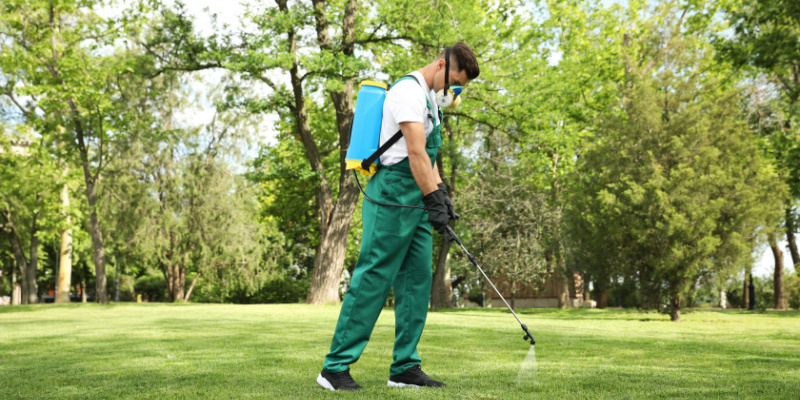In Ohio, maintaining a healthy and beautiful lawn is a point of pride for many homeowners. However, this can often feel like an uphill battle due to the various pests that threaten to overrun your yard. Understanding these pests and knowing how to effectively manage them is key to ensuring your lawn remains a lush, inviting space.
Common Lawn Pests in Ohio
Let’s start by identifying some common lawn pests in Ohio:
- Grubs:
These beetle larvae feed on grass roots, causing yellow patches and loose turf.
- Chinch Bugs:
These small bugs suck the sap out of grass blades, leading to yellowish-brown patches.
- Japanese Beetles:
The adult beetles feast on foliage, while their larvae (grubs) damage the roots.
- Moles:
While not directly harmful to grass, moles tunnel through soil, uprooting grass and creating unsightly mounds.
- Armyworms:
These caterpillars can quickly devour large areas of grass, leaving behind brown, bare patches.
Effective Pest Management Strategies
Controlling these pests requires a multi-faceted approach that includes both preventative measures and targeted treatments.
1. Regular Lawn Maintenance
Regular mowing, watering, and fertilizing go a long way toward keeping your lawn healthy and less susceptible to pest infestations. A well-maintained lawn can better withstand the stress caused by pests.
2. Proper Identification
Correctly identifying the pest is crucial. Different pests require different treatment methods. For instance, treatments for grubs are ineffective against chinch bugs.
3. Integrated Pest Management (IPM)
IPM is a sustainable approach to managing pests by combining biological, cultural, physical, and chemical tools in a way that minimizes economic, health, and environmental risks. This includes:
- Monitoring for early detection of pest activity.
- Introducing natural predators or beneficial insects.
- Using pesticides as a last resort and applying them responsibly.
4. Soil Health
Healthy soil is less inviting to many pests. Regular aeration helps improve soil structure, and adding organic matter can boost its fertility and resilience.
5. Grub Control
Grubs are one of the most damaging pests. They need to be treated when they are young and actively feeding, usually in late summer or early fall. There are various treatments available, including biological options like milky spore disease or chemical insecticides.
6. Moles Control
While moles are not directly harmful to grass, their tunnels can be unsightly and can indirectly harm your lawn by exposing roots. Control methods include trapping, repelling, and reducing their food source (grubs).
When to Call in the Professionals
While DIY pest control can be effective for minor infestations, sometimes the problem can be too large or complex. Here are some signs that you might need professional help:
- Widespread Damage:
If a significant portion of your lawn is affected, professionals can provide more efficient and effective treatment options.
- Recurring Infestations:
If pests keep coming back despite your efforts, professionals can identify and address the underlying causes.
- Uncertain Identification:
Misidentifying pests can lead to ineffective treatments. Professionals can accurately identify and suggest the best course of action.
The Role of Professionals in Lawn Care
Professional lawn care services offer several advantages:
- Expertise:
They have the knowledge and experience to diagnose and treat various lawn pests effectively.
- Customized Solutions:
Professionals can tailor their approach based on the specific needs of your lawn.
- Time and Cost Savings:
They can often resolve issues more quickly and prevent costly damage to your lawn.
Pests can be a major nuisance for Ohio homeowners, but with the right knowledge and approach, they don’t have to take over your yard and lawn. Regular maintenance, proper identification, and integrated pest management are key to controlling these unwanted visitors. And when the situation calls for it, don’t hesitate to seek professional assistance.
Remember, a healthy lawn is not just about looks; it’s about creating a vibrant, sustainable environment that you and your family can enjoy. So, take the necessary steps to protect your lawn from pests and ensure it remains a green, thriving oasis in your outdoor space.

